Potential spoilers ahead. You’ve been warned.
BILL MURRAY
Film: Lost in Translation
I’m going to start this selection with a statement I know to be divisive: I don’t care for Bill Murray. This film, however, may be the exception. As popular as his movies are, I’ve always thought they were overhyped. Films like Ghostbusters or Stripes have enjoyable moments, and maybe it’s just a generational thing, but I don’t think his movies are the brilliant comedies people make them out to be. I think that’s because Murray tends to play the same smug, smart-ass character in every film. But with age, he has also grown his repertoire to include “grumpy old man.” I have my opinions, but I’m not here to criticize Murray and his films. What I am here to talk about is just how good of a performance he gave in Lost in Translation.
Don’t get me wrong. Murray still plays a smart-ass, but this time, it’s different. In his previous films, Murray was just doing his Murray schtick. In Lost in Translation, he’s the smart-ass because it’s an essential trait of his character, Bob Harris. All the smart-ass comments and quips are a defense mechanism for Harris. When life gets tough for him, that’s how he copes. He would rather make a sarcastic quip than admit he’s a fading star drowning alive in his marriage. The sarcasm is layered with subtext, and Murray uses it very well.
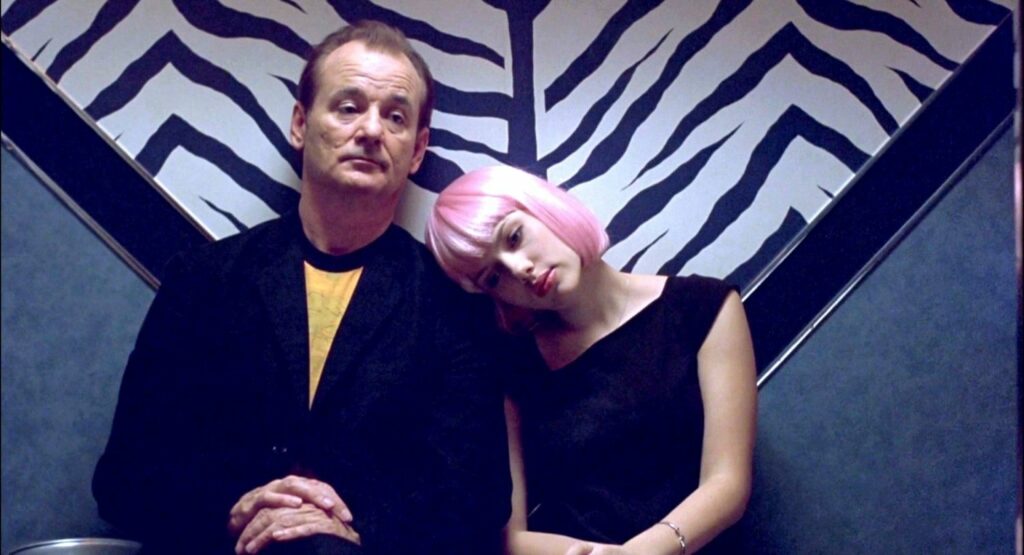
As previously mentioned, most of Murray’s dialogue is sarcasm with subtext. He says very few honest things throughout the movie. I would argue that 90% of Murray’s acting is through body language and his expressions. There are a few examples that exemplify this idea. The first is when he is suffering from insomnia. Before he goes down to the bar and meets Charlotte for the first time, he is flipping through channels when he comes across a clip from one of his old movies (really, an SNL sketch with a young Murray). The way Harris stares at the younger version of himself, really speaks volumes about his current mental state. In his eyes, you can see a mixture of the contempt he feels toward his younger self, but also the longing for those days when everything seemed simpler. This is when I began to feel for Harris. Whereas Charlotte is struggling to find her purpose in her new life as a college graduate and married woman, Harris is struggling to re-find his purpose in a world he has already created for himself.
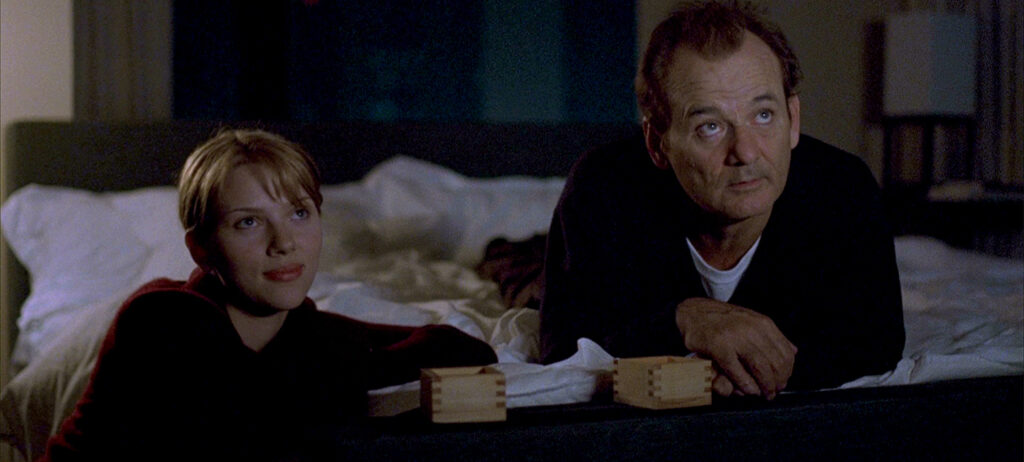
Harris’ marriage problems are clear from the start of the movie. When he arrives at the resort, his first communication is a message from his wife saying that he missed his son’s birthday, but that she still loves him. At least to me, as a viewer, that seems contradictory. To tell your husband you love him, but to also make him feel guilty for missing his son’s birthday. But it takes a conversation this extreme to clue the audience in that Harris’ life isn’t all sunshine and rainbows. He tells Charlotte that he’s in Tokyo because he is getting paid $2 million for a whiskey commercial, but his real incentive is to get away from his family. This is clear when at the end of the commercial shoot, Harris agrees to extend his time in Tokyo. He just cannot go back. This is never more apparent than in the scene where Harris is relaxing in the bath. His eyes are closed in what seems like his one moment of peace in the entire film. Then his cell phone rings and it’s his wife, hounding him about choosing a wood for the floor in his study. This immediately brings him back to reality and he finally tells his wife “I don’t care.” When he hangs up, he submerges his head underwater, provoking the image of him drowning alive in his marriage.

As much as this post is about Murray, I do have to, at the very least, acknowledge both Scarlett Johansson and writer/director Sofia Coppola. Together, they allowed Murray to shine. It never ceases to amaze me when I watch this movie and remember that Johansson was only 18 during filming. Yes, she looks 18, but she carries herself with the pathos of a character beyond her years. She perfectly embodies this woman, who is still trying to navigate life to find her own identity, while also being a lonely newlywed in a place as isolating as Tokyo. It just blows my mind that at 18, she could play her character so convincingly. Looking back on all the accolades the film received, it strikes me odd that she was not nominated for an Academy Award, despite both she and Murray winning the BAFTAs (British Film Academy) for Best Actor and Actress. This film proved to me that Johansson is more than the sex symbol/badass the Marvel movies made her out to be, which is why I was so happy that she received dual Oscar nominations in 2020 for her lead performance in Marriage Story and her supporting performance in JoJo Rabbit.
I have to commend Coppola for crafting such an intimate film in such a large-scale location. As a viewer, it almost feels like it’s the third main character. By setting the film in Tokyo, she uses the location to compare how lost these two characters feel to how they are essentially lost in a country they have no familiarity with. And because Bob and Charlotte are among only a handful of English speakers at their resort, it creates a greater dependency on one another. I also would like to commend Coppola for sticking with the friendship between Bob and Charlotte, instead of developing it into a romance. In the hands of a lesser filmmaker, this certainly could have been a strong possibility. Keeping the central relationship a friendship gave the film a greater poignancy and I believe this element was one of the key reasons people still talk about this movie 20 years later.
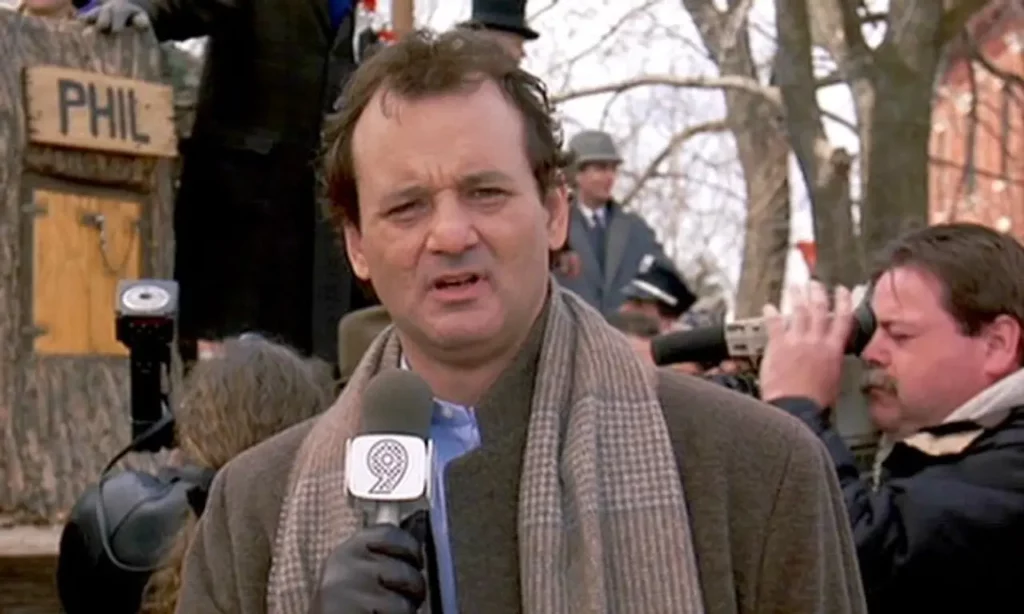
Going back to Murray, I would like to propose a ten-year evolution of Murray as an actor, starting with 1993’s Groundhog Day. Surprise, surprise, Murray plays his schtick, but as the film progresses, so does Murray’s character, Phil Connors. It’s one of his few films up to that point, where Murray’s character grows and matures. Peter Venkman and Carl Spackler (Caddyshack) have character arcs, sure, but there seems to be no maturity in that change. Phil Connors is the first character that I believe demonstrates this change. Yes, it may be one of Murray’s most revered comedies, but the film has dark moments. Phil is so desperate to escape the time loop that he attempts suicide multiple times and in varying ways. It’s not until he learns to love someone else, in this case Rita (Andie MacDowell), that he can escape the time loop and experience true happiness.
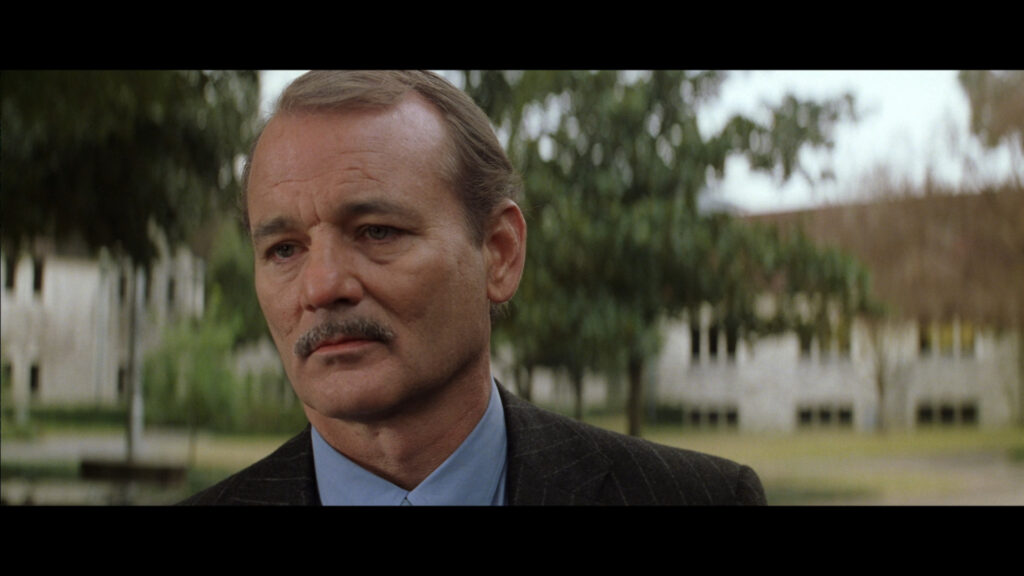
Unfortunately for Murray, his career took a dip in the mid-90s, with maybe his most notable part being a supporting performance in Tim Burton’s Ed Wood. However, five years after Groundhog Day in 1993, Murray experienced a career resurgence, but this time as an actor in the independent cinema scene when Wes Anderson cast him in the film Rushmore. Murray plays Herman Blume, a middle-aged single father who despises his kids and is disenchanted with his life. It’s only when he meets his son’s ambitious classmate, Max Fischer (Jason Schwartzman), does Blume find his life re-invigorated. Seeing lots of himself in Max, Blume begins to mentor him. This all comes to a head when both Max and Blume find themselves vying for the heart of Ms. Cross (Olivia Williams), a widowed first-grade teacher. Then it escalates to full-on war. You can even see the beginnings of Bob Harris in Blume. Many critics lauded Murray, and he was nominated for the Golden Globe for Best Supporting Actor.
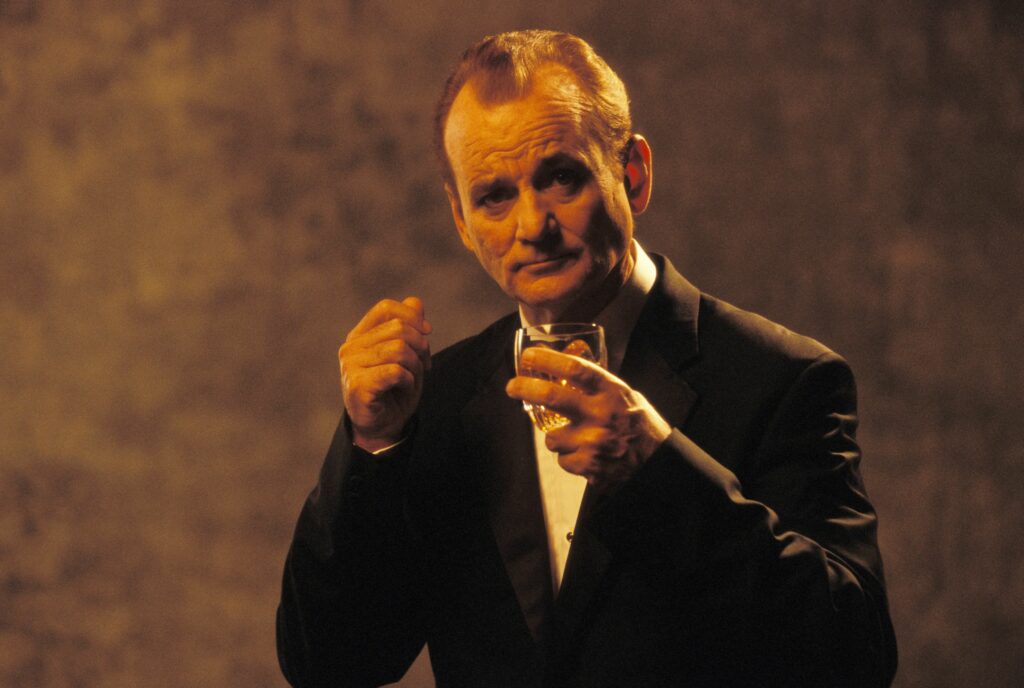
Then, like clockwork, five years after Rushmore comes Lost in Translation. With this film, Murray was nominated for his first (and so far only) Academy Award. He looked none too pleased when he lost the award to Sean Penn in Mystic River. Looking at his filmography as a whole, it doesn’t at all surprise me that Murray had this career revival as a serious actor. In the early 1980s, he tried his hand at serious drama. He made the little-seen Where the Buffalo Roam, playing Hunter S. Thompson. In 1984, before the release of Ghostbusters, he appeared in a passion project of his, The Razor’s Edge. Both movies bombed and it wasn’t until Rushmore almost two decades later, that Murray tried his hand again at more serious roles. It’s unfortunate, but I do believe Murray’s “serious actor” phase peaked with Lost in Translation. Despite appearing in small supporting roles (and one lead) in many of Wes Anderson’s films, and with the exceptions of films like St. Vincent, and a notable cameo in Zombieland, he hasn’t reached the same pinnacle. He may be in his early 70s as of this writing, but I believe there is still time for him to shine.
Check this out: Does It Get Easier? – Lost in Translation (8/10) Movie CLIP (2003) HD